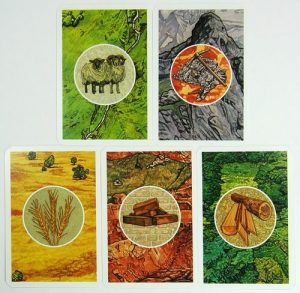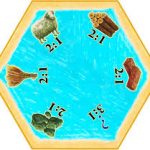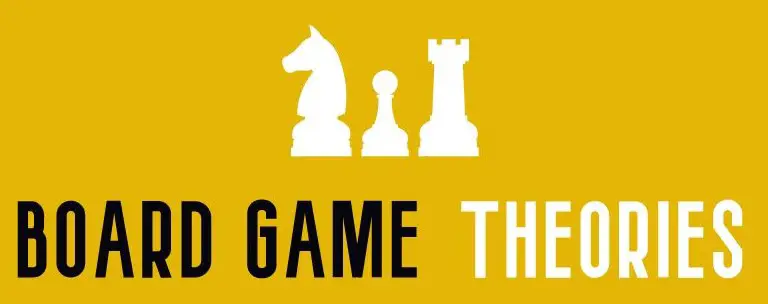Settlers of Catan is most certainly one of the classics in the board game genre. It’s hard to find anyone that hasn’t heard from this game. And although the basic stategy is quite straightforward, there are some elements you easily forget. In this post we discuss some tips to enhance your Catan strategy.
 In general the best resource is grain. You need grain to buy settlements, cities, and development cards. Without enough grain, it is impossible to gain victory points and thus impossible to win the game. Grain is good in early game to buy settlements, and good in the mid and end game to buy cities. Furthermore, because every player needs grain, it is also a good resource for trading.
In general the best resource is grain. You need grain to buy settlements, cities, and development cards. Without enough grain, it is impossible to gain victory points and thus impossible to win the game. Grain is good in early game to buy settlements, and good in the mid and end game to buy cities. Furthermore, because every player needs grain, it is also a good resource for trading.
A very close second is both lumber and brick. Lumber and brick are necessary to buy a settlements and together buy roads. Roads are the lifeline of every good Catan strategy. Without roads, you cannot expand, which is essential in the early phase of the game.
The worst resource is sheep. Besides development cards (more about this later), sheeps are only needed to buy settlements. And you are not going to buy that much settlements. In an average game you need to build 7 settlements to win the game. You don’t want to invest too much in a resource you only need so few times. Beter to invest in a more valuable resource and trade that one, if necessary, for sheep.
How to use harbors optimally
 Harbors are very strong assets, if used properly. In the base game, there are 4 3:1 harbors and 5 2:1 harbors for each resource. As a start, it is good to control a 3:1 harbor. It saves you a resource when trading with the bank.
Harbors are very strong assets, if used properly. In the base game, there are 4 3:1 harbors and 5 2:1 harbors for each resource. As a start, it is good to control a 3:1 harbor. It saves you a resource when trading with the bank.
More strategic and interesting are the 2:1 harbors. A 2:1 harbor can be your greatest asset or virtually worthless. Suppose the sheep hexes have very unfavorable number tokens. That sheep harbor is probably not being used that often during such a game. On the other hand, suppose the number tokens are very favorable for lumber, that means there will probably be a lot of lumber in the game. If you control the lumber harbor, you can be the lumber-master of the game and gain a lot offering your fellow players to trade there lumber to anything for a fee.
This may seem very obvious, but note that this is something you can already plan for before the game really starts. Just inspect the placement of the hexes and the number tokens, and build your first settlements accordingly.
Are development cards worth it?
There are 3 types of development cards in the Catan base game: knight cards, progress cards, and victory point cards. And in general, they are not worth it. The designers of Catan also seem to have recognized this, as they made new, much strong development cards in Cities and Knights, the best Catan expansion.
Victory cards are worth 1 point, and do cost 3 resources. That is one resource less than a settlement. But, contrary to settlements, victory cards do not help you during the game other than providing a victory point. Settlements gain you resources. Therefore it seems better to use 4 resources to build a settlement.
Progress cards are somewhat better, but also not that good. I used to be pretty happy when getting progress cards, such as Road building, because it gets you two roads for free. But on inspection, these roads are not free, they just cost you 3 resources for the development card. That said, sometimes a progress card will give you a kickstart to get on top.
Knight cards
 The majority of the development cards are knight cards. The knight cards can be useful when the robber occupies one of your tiles. But a little math shows that you should not be too eager to use knights. Suppose the robber occupies a tile with a 6 adjacent to your settlement. The chance that exactly 6 is roled in a turn is roughly 14%, that is 1 out of every 7 times. In other words, on average you miss out on one resource once every 7 turns. Given that a knight costs 3 resources, you expect to break even after 21 turns. However, this is given that you have only one settlement on the robbers tile. If you have two settlements or a city, you miss out on 2 resources every 7 turns. That means you break even after only 10 turns.
The majority of the development cards are knight cards. The knight cards can be useful when the robber occupies one of your tiles. But a little math shows that you should not be too eager to use knights. Suppose the robber occupies a tile with a 6 adjacent to your settlement. The chance that exactly 6 is roled in a turn is roughly 14%, that is 1 out of every 7 times. In other words, on average you miss out on one resource once every 7 turns. Given that a knight costs 3 resources, you expect to break even after 21 turns. However, this is given that you have only one settlement on the robbers tile. If you have two settlements or a city, you miss out on 2 resources every 7 turns. That means you break even after only 10 turns.
Of course you should also consider that if the robber is not placed on your tile, it is probably placed on someone else’s. Which makes the odds more in favor of buying the knight. But also note that this is the best scenario. If the robber occupies a tile with lower odds number token, it takes more turns to make buying a knight worth it. In addition, on average 1 out of every 6 turns a 7 is rolled. In that case, the robber will move anyway. This makes it even less useful to buy a knight.

